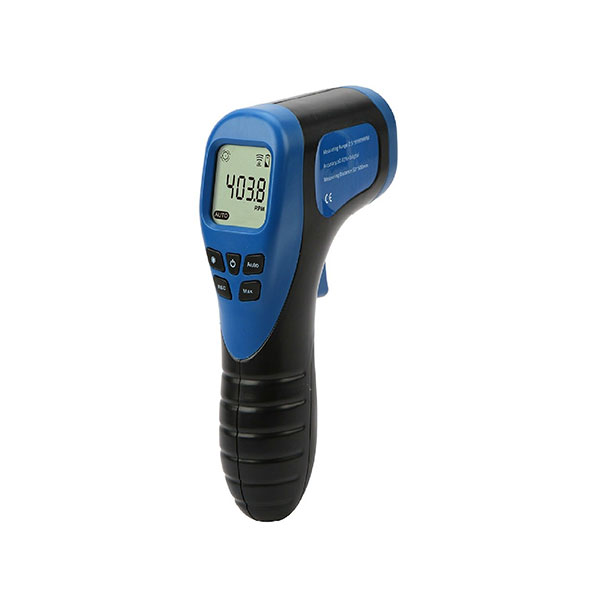Comprehensive Guide to Understanding and Using a Tachometer Effectively
Comprehensive Guide to Understanding and Using a Tachometer Effectively
Blog Article
The Relevance of a Tachometer in Monitoring Engine Rate and Performance in Automotive Applications
In the world of auto engineering, the tachometer stands as an essential tool in the driver's arsenal, offering a direct window into the inner functions of an automobile's engine. Past its feature as a plain scale of changes per min (RPM), the tachometer offers as an essential tool for enthusiasts and professionals alike, providing real-time insights into engine efficiency and wellness.
Relevance of Monitoring Engine RPM
Keeping track of engine RPM, or changes per min, is a crucial aspect of automotive upkeep and efficiency evaluation. Engine RPM straight associates with the speed at which the engine's crankshaft revolves, indicating just how rapidly the engine is running.
Moreover, keeping track of engine RPM is vital for performance examination in racing and high-performance automobiles. Maintaining ideal RPM levels is critical for accomplishing peak power result and acceleration. Racers usually use tachometers to guarantee they are operating within the ideal RPM array for maximum performance. In recap, keeping track of engine RPM is not just essential for finding problems yet also for enhancing engine efficiency in various vehicle applications.

Benefits of Real-Time Data
In vehicle applications, real-time information plays a vital duty in providing instant insights into the efficiency and problem of the vehicle. By constantly keeping an eye on different specifications such as engine rate, temperature level, fuel usage, and much more, real-time data uses countless advantages that add to improved effectiveness and security on the road.
Additionally, real-time data assists in efficiency optimization by giving prompt responses on driving routines and engine effectiveness. Vehicle drivers can readjust their actions in real-time based on this details to attain much better fuel economic climate and prolong the life expectancy of their car.

Moreover, real-time data plays an important role in modern-day vehicle diagnostics, making it possible for technicians to rapidly identify and deal with malfunctions. This causes decreased downtime, lower upkeep prices, and inevitably, improved total vehicle integrity and longevity (tachometer). By harnessing the power of real-time data, automobile stakeholders can make educated decisions that favorably influence both the performance and durability of the car
Influence On Gear Shifts
The tachometer plays an important duty in maximizing gear shifts by providing real-time engine helpful resources speed data to the motorist. When approaching the redline on the tachometer, it signals the chauffeur to upshift to protect against over-revving the engine and causing possible damage.
Additionally, the tachometer help in accomplishing smoother equipment changes, especially in manual transmissions. By keeping track of engine speed, motorists can perform equipment shifts at the ideal RPM variety, reducing jerking activities this website and lessening endure the transmission elements. This accuracy in equipment changes not just enhances driving convenience yet likewise adds to fuel efficiency.
Enhancing Fuel Performance
Offered the essential duty the tachometer plays in maximizing gear changes for efficiency and engine health and wellness, it directly contributes to maximizing fuel effectiveness in automobile applications. By supplying real-time feedback on engine speed, the tachometer aids motorists in maintaining one of the most effective RPM variety for gas economic situation. When drivers regularly keep an eye on the tachometer and readjust their motoring routines as necessary, they can avoid unnecessary gas usage triggered by over-revving or hauling the engine.
Additionally, the tachometer aids vehicle drivers determine one of the most fuel-efficient gear to be in at any kind of given moment, avoiding the engine from working more difficult than necessary. This is especially critical throughout velocity and travelling, where remaining in the right equipment can considerably affect fuel effectiveness. Furthermore, the tachometer can inform vehicle drivers to possible mechanical problems that might be adversely influencing gas economy, such as a sliding clutch or a blocked use this link air filter. To conclude, the tachometer works as an important device in enhancing gas effectiveness by promoting ideal driving routines and identifying areas for improvement in the vehicle's efficiency.

Maximizing Engine Long Life
The tachometer's function in monitoring engine rate and performance is crucial in ensuring the longevity of automobile engines. By making use of the tachometer efficiently, chauffeurs can optimize engine long life with conscious RPM monitoring. Continually revving an engine expensive can result in excessive damage on essential parts, such as the pistons, valves, and bearings. In time, this can result in decreased engine performance and potential breakdowns. Keeping track of the tachometer allows drivers to remain within the recommended RPM array for their automobile, preventing unnecessary stress on the engine and prolonging its life-span.

Final Thought
In verdict, the tachometer plays an essential duty in monitoring engine speed and performance in auto applications. By giving real-time information on RPM, it allows for efficient equipment changes, improved fuel effectiveness, and optimized engine longevity. This tool is necessary for preserving ideal engine performance and making certain the overall capability of a car.
Report this page